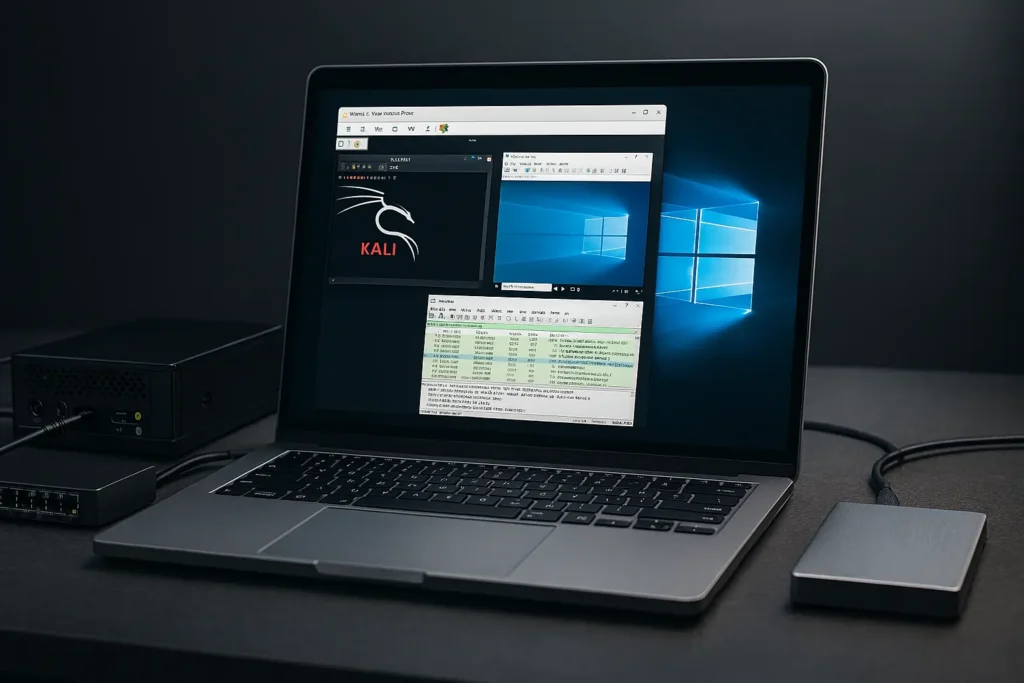Advisory: The skills gap in cybersecurity continues to grow, with over 3.5 million jobs unfilled globally. Hands-on experience is now the critical differentiator for landing a SOC analyst or threat hunter role. The good news: you don’t need a corporate budget to build a capable training environment.
This guide provides a practical, cost-effective blueprint for building a functional home lab using free software and affordable hardware. You can start practicing digital forensics, analyzing malware, and detecting attacker TTPs for an initial investment of under $300.

Why You Need a Home Lab in 2025
Theoretical knowledge isn’t enough. Hiring managers consistently prioritize candidates who can demonstrate practical skills. A home lab allows you to:
- Gain Hands-On Experience: Practice real incident response procedures in a safe, isolated environment.
- Test Tools and Techniques: Experiment with security tools without risking a production network.
- Build a Portfolio: Document your lab projects to showcase your skills during job interviews.
In practice, a well-documented lab project is more valuable than another entry-level certification.
The Budget Hardware Blueprint (Total: ~$250-$300)
You do not need the latest hardware. Focus on capable, used components that support virtualization.
Core Components:
- Mini-PC (Refurbished): A used Dell OptiPlex or Lenovo ThinkCentre with an Intel i5 processor (8th Gen or newer), 16GB RAM, and a 256GB SSD. Cost: ~$150-$200. This is your lab’s foundation.
- Networking Gear: A basic gigabit switch. Avoid consumer-grade “smart” switches with unnecessary features. Cost: ~$25.
- Storage: A 1TB external HDD for storing virtual machines, memory dumps, and evidence files. Cost: ~$50.
This setup can run 3-4 virtual machines simultaneously, which is sufficient for most beginner-to-intermediate projects.
Want to see a $100 lab in action? This video walkthrough breaks down the core philosophy of starting small with refurbished hardware and free hypervisors like VMware ESxi. It’s a perfect practical companion to the hardware list above, demonstrating how to plan and repurpose old tech for maximum learning value.
The Free Software Stack
The software side of your lab requires zero budget, only time to download and configure.
- Hypervisor (The Foundation): VMware Workstation Player (Free for personal use) or VirtualBox. These let you run multiple operating systems on your single host machine.
- Target Operating Systems:
- Windows: Download evaluation copies of Windows 10/11 from Microsoft’s website. These run for 90 days before needing a reinstall.
- Linux: Use lightweight, security-focused distros like Security Onion (for network monitoring) and Kali Linux (for penetration testing).
- Essential Security Tools:
- Wireshark: The industry standard for network protocol analysis.
- Autopsy: A open-source digital forensics platform for analyzing disk images.
- Velociraptor: An advanced endpoint monitoring and digital forensics tool.
- Elastic Stack (Elasticsearch, Logstash, Kibana): For building a central logging server (SIEM).
Your First Lab Project: Isolate a Malware Outbreak
Apply your new lab to a realistic scenario. This project mirrors a common SOC alert.
Objective: Analyze a simulated ransomware sample and identify its key IOCs.
- Lab Setup: Create three virtual machines: one “attacker” (Kali Linux), one “victim” (Windows 10), and one “monitor” (Security Onion). Isolate them on a virtual network.
- Execution: On the attacker VM, use a tool like Metasploit to generate a simulated, non-destructive payload. Execute it on the victim VM.
- Analysis: Use your monitoring VM to capture network traffic with Wireshark. On the victim VM, use Velociraptor to collect process information and artifact evidence.
- Documentation: Record the malware’s TTPs: the C2 server IP address, the files it modified, and the registry keys it created.
This project teaches you core skills: evidence preservation, chain of custody, and basic malware analysis.
Maintaining and Scaling Your Lab
Start with the basics. As your skills grow, so can your lab.
- Cloud Credits: Use free tiers from AWS, Azure, or Google Cloud to host vulnerable web apps for penetration testing practice.
- Reddit Communities: Join subreddits like r/homelab and r/netsecstudents for advice on finding cheap hardware and new project ideas.
- Stay Current: Subscribe to newsletters like
Krebs on SecurityandCISA Alertsto discover new vulnerabilities and threats to simulate in your lab.
Security professionals should practice consistently. A home lab is the most effective tool for transitioning from theory to practical, job-ready skills. Start building yours this weekend.
FAQ: Cybersecurity Home Labs
Q: Is it legal to practice hacking in a home lab?
A: Absolutely. Your lab is an isolated, self-contained environment. As long as you are only attacking your own virtual machines, you are operating within a legal and ethical framework. Never scan or attack systems on the public internet without explicit written permission.
Q: I have an old laptop. Can I use that instead?
A: Yes. An old laptop with 8GB of RAM can be a starting point. You may only be able to run 2 VMs at once, but it’s enough to begin learning the fundamentals of tools like Wireshark and Autopsy.
Q: Where can I find safe malware samples to analyze?
A: Never download real malware from open forums. Instead, use sites that provide simulated or “educational” malware samples, such as VirusShare (requires registration) or the FLARE VM from Mandiant, which includes challenges.
Q: How do I list my home lab on my resume?
A: Create a “Projects” section. For each lab project, list the objective, the tools you used (e.g., “Used Wireshark and Velociraptor to isolate…”), and the outcome. This demonstrates practical skill application directly to hiring managers.
No post found!
About the Author
No post found!

